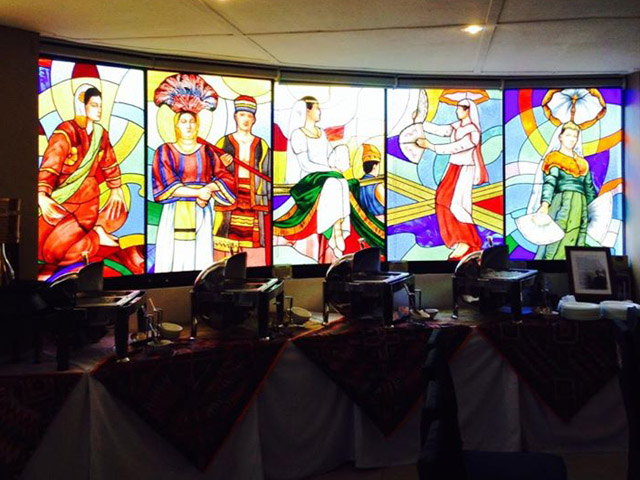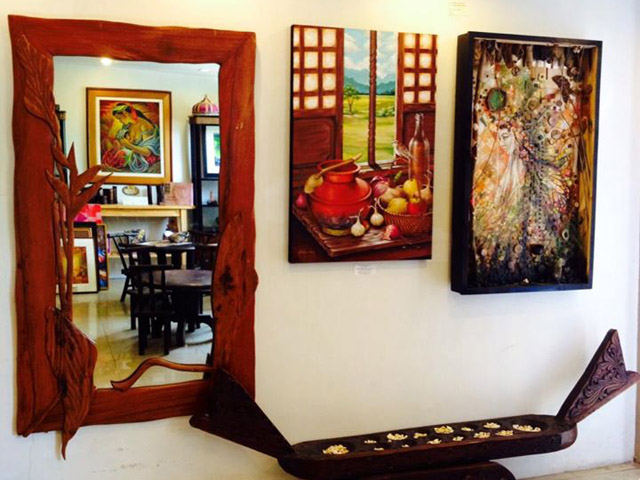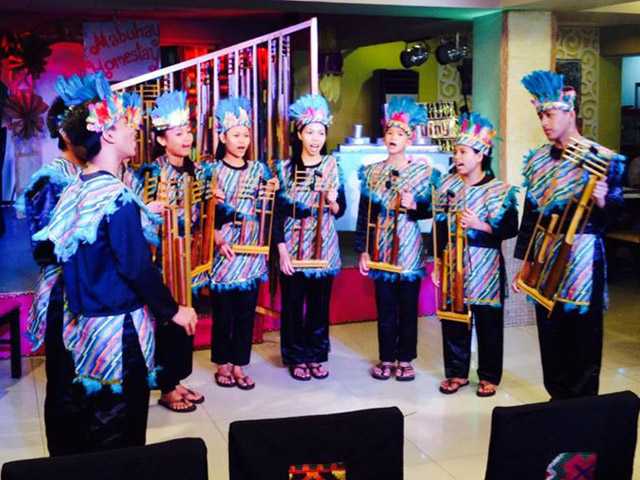Filtered By: Lifestyle
Lifestyle
Enjoying native food and culture for a cause at Mabuhay Restop
Text and Photos by JENNY ORTUOSTE

Mabuhay Restop participated in the Cultural Center of the Philippines’ 10th Pasinaya Festival last Mar. 16. The event showcased simultaneous festivities held at art galleries and museums in Manila and Pasay City, and at the CCP.
According to Cabrera and Lumauig, more activities, exhibits, and shows are planned for the coming months.
Social significance
Mabuhay Restop does not only offer a sampler of Filipino culture; it also aims to make an impact socially.
Established by Rose Isada Cabrera—a former Los Angeles-based lawyer who returned to the Philippines to engage in social development projects—Mabuhay Restop benefits non-governmental organization Gawad Kalinga.
According to Cabrera, Mabuhay Restop “is one of the first social enterprises committed in giving 30 percent of its net income to Gawad Kalinga.”
Cabrera added that by their example, they have shown other entrepreneurs a feasible and sustainable business model for partnering with the poor through social enterprises toward nation-building.
Art everywhere

These items include baskets, tote bags, t-shirts, Human Nature products (“green” toiletries), Bayani Brew lemongrass and purple leaf tea, Bambowties (a natty accessory for dressy makabayan gents), and Theo & Philo artisan chocolate (in flavors such as Barako, Siling Labuyo, and Green Mango with Sea Salt).
The second floor houses the restaurant, the stage, and the art gallery. On permanent display are works by ceramic artist Ugu Bigyan, glass artist Ramon Orlina, and others. In one corner is a tableau of carved wooden furniture from the highlands, including a high-backed chair, a child-sized dining set, stools, and tables. On a wall, a massive carved wooden frame surrounds a mirror. Below it is a huge carved standing sungkaan (sungka is a mancala game played in Southeast Asia and known by various other names).
This year, the walls were also decorated in a rotating exhibit of works of artists from different regions of the country. For March, it was Central Luzon. The works are available for purchase direct from the artists.
Local food galore
Easily the most noticeable piece is the vibrant stained-glass window by Pancho Piano, depicting Filipino folk dancers. It shimmers above the buffet table, which groans under the weight of delicious native dishes.
The current menu includes iconic dishes such as Callos, Pork Humba, Pyanggang Chicken (a delicacy from Sulu), Kare-Kare, Lumpiang Hubad, and Chicken Binakol, a hearty soup served in coconut shell bowls.
For dessert, diners may opt for turon, sinukmani, suman, or maja mais, or make their own halo-halo in colorful plastic glasses.
Theater show

Among the regular troupes is the Kalilayan Folkloric Group, a talented team of singers and dancers who regale the audiences with songs from kundiman to Celeste Legaspi pop songs, and dances such as the Binasuan (where glasses of rice wine are balanced on the head and both hands), La Jota, La Cariñosa, and others.
Twirling in lavish 19th century costumes, the Kalilayan performers take the audience on a cultural journey through time. Not only is their act entertaining, it is also informative and educational, making it a learning experience for anyone who has not had much exposure to traditional cultural forms.
Another interesting performance was by a group of young people who mimicked bird calls and other animal sounds, accompanying themselves on angklung bamboo instruments.
Mabuhay Restop’s flagship show is “Manila Vanilla”, held every Saturday night. According to Gawad Kalinga volunteer Gina Lumauig, “It’s a musical-comedy that showcases the beauty of our country” that was written and directed by Nestor U. Torre, with music by Ryan Cayabyab.
‘Voluntourism’
Apart from being a food and cultural arts venue, Mabuhay Restop also offers social tours.
“Kalinga tours are what we call ‘voluntourism’,” said Lumauig. “Guests can opt to visit Gawad Kalinga villages, or see the GK Enchanted Farm in Angat, Bulacan.”
Historical tours within Manila are also offered, such as the “Bayan Tour” (around Rizal Park), and the “Bambike Eco Tour”, a tour of Rizal Park and Intramuros conducted on bamboo bikes. — VC, GMA News
Mabuhay Restop is located beside Museo Pambata at Rizal Park, on the Quirino Grandstand side. Email:info@mabuhayrestops.com.
More Videos
Most Popular



